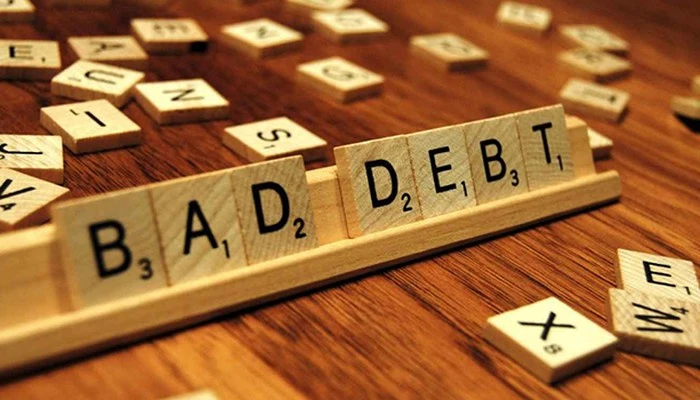
Although bad debts were still sustainable during the first and second quarter, it is in the third quarter that bad debts have resurfaced with adverse effect, which is now raising serious concerns across all banking sectors.
Bad debt losses
In a report to the Economic Committee of the National Assembly on 23 September, the State Bank of Vietnam said that on-balance-sheet bad debt ratio of credit institutions was below 3%. At the end of July, it was at 1.92% and at end of August at 1.96%. This is a good percentage as opposed to high concerns on current bad debt ratio seen by financial experts. These figures have been published in Circular 01/2020 of the State Bank of Vietnam, asking banks not to change debt groups so as to help businesses that have been badly affected by the Covid-19 pandemic.
Early this year, Dr. Tran Du Lich, a member of the National Financial and Monetary Policy Advisory Council, had predicted that the banking industry would face many challenges in 2020, including the challenge to reduce the internal bad debt ratio. Circular 01/2020 allows for debt restructuring, keep debt groups intact, help enterprises that are stuck in debt to take new loans to restore production, and also reduce level of bad debts.
According to Dr. Le Dat Chi from the University of Economics in Ho Chi Minh City, at end August, the debt restructured under Circular 01/2020 was at VND 321,000 bn, which is 3.74% of total outstanding loans. Debt restructuring period cannot exceed more than twelve months from last day of loan term. Accordingly, debt repayment terms restructured under Circular 01/2020 will be due after the restructuring period in the fourth quarter of 2020 and the first quarter of 2021. At the beginning of the year, the State Bank of Vietnam said that upto VND 2.27 mn of outstanding loans would be affected by the Covid-19 pandemic, which sees upto VND 769,000 bn not being restructured and hence lost as bad debt.
Worsening scenario
At the end of the second quarter, the bad debt ratio in commercial banks only inched slightly compared to the beginning of the year. By the end of the third quarter, fourteen to seventeen commercial banks announced their financial statements with record high non-performing loans (NPL). Vietcombank NPL was at 0.79%, against total outstanding loans at the beginning of the year, slightly up by 0.83% at the end of the third quarter. By 30 September, VietinBank on-balance-sheet bad debt was at VND 17,949 bn, up 12% from the end of the second quarter and 66% higher than at the beginning of the year.
In commercial banks, the NPL ratio increased faster. Consolidated NPL at VPBank by 30 September was at VND 10,147 bn, an increase of 15.3% compared to the beginning of the year, pushing NPL ratio in total outstanding loans from 3.42% to 3.65%. Sacombank recorded about VND 6,837 bn in internal bad debts, up 19% compared to the beginning of the year, with NPL ratio increasing from 1.9% to 2.13%.
ACB bad debt ratio was around VND 2,478 bn, up by 71% with bad debt ratio increasing from 0.5% to 0.83%. TPBank total bad debt until 30 September was about VND 1,970 bn, up 60% with NPL ratio increasing nearly 1.3% since the beginning of the year. MB-bank recorded a 39% increase in bad debt to touch VND 4,034 bn, pushing NPL ratio from 1.16% to 1.5%. OCB also showing an increase from 1.84% to 2.15%.
In small-sized commercial banks, bad debts were worse than in larger banks. KienlongBank recorded a 6.5-time increase in bad debts compared to the beginning of the year, to touch VND 2,241 bn, with an increase from 1.02% to 6.63%. Early this year, the bank recorded nearly VND 1,900 bn in outstanding loans in customers classified in Group 5 debts. These loans are guaranteed with 176 million shares and the bank is trying to sell these shares to bring the NPL ratio back to a low level. Bad debt at VietBank also increased 61% to VND 867 bn, with NPL ratio at the end of third quarter at 2.03%.
Risks in coming years
The State Bank of Vietnam announced on-balance-sheet NPL ratio at end of August at below 2%. At the plenary session of the Economic Committee of the National Assembly on the afternoon of 25 September, the State Bank of Vietnam stated ratio of internal bad debt and potential risk debt as of August at about 4.48%, owing to current adverse impact of the Covid-19 pandemic. Despite the draft amendments the State Bank of Vietnam has not so far made Circular 01/2020 official. Draft amendments mention regulations allowing credit institutions to restructure debts, and either exempt or reduce interest, and keep debt group intact for debts arising from 23 January until 25 April.
The financial statements of commercial banks show that risk provisioning is a strong trend, two to three times higher than in the same period last year. Banks know best about current and future bad debt situations, which proves they are constantly bracing themselves for likely scenarios. According to many financial experts, the pressure to handle debts by the banking industry will be very huge in the near future, because Circular 01/2020 has brought bad debts to the future and disbursement of loans during the current outbreak of Covid-19 will have higher risks. Moreover, commercial banks have to take loan from the Vietnam Asset Management Company (VAMC). This will not only be an immediate burden, but one that will last for many following years to come.




















